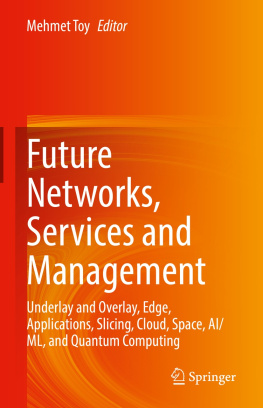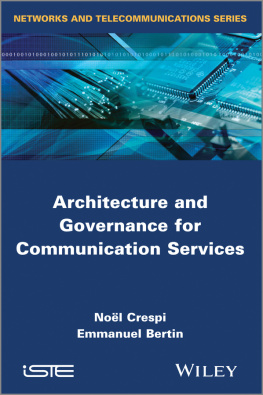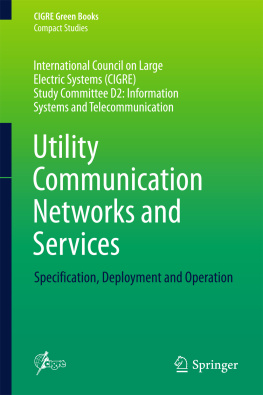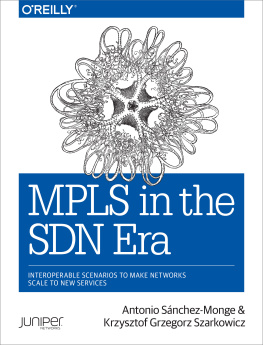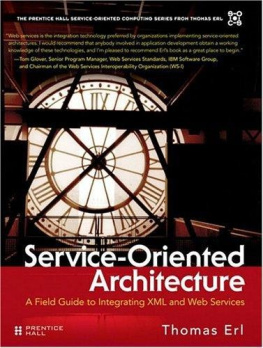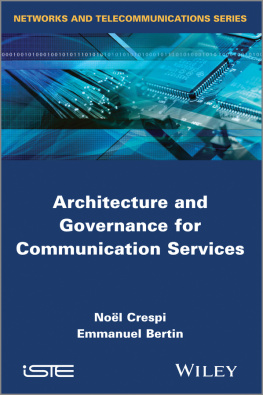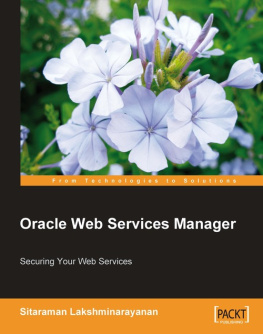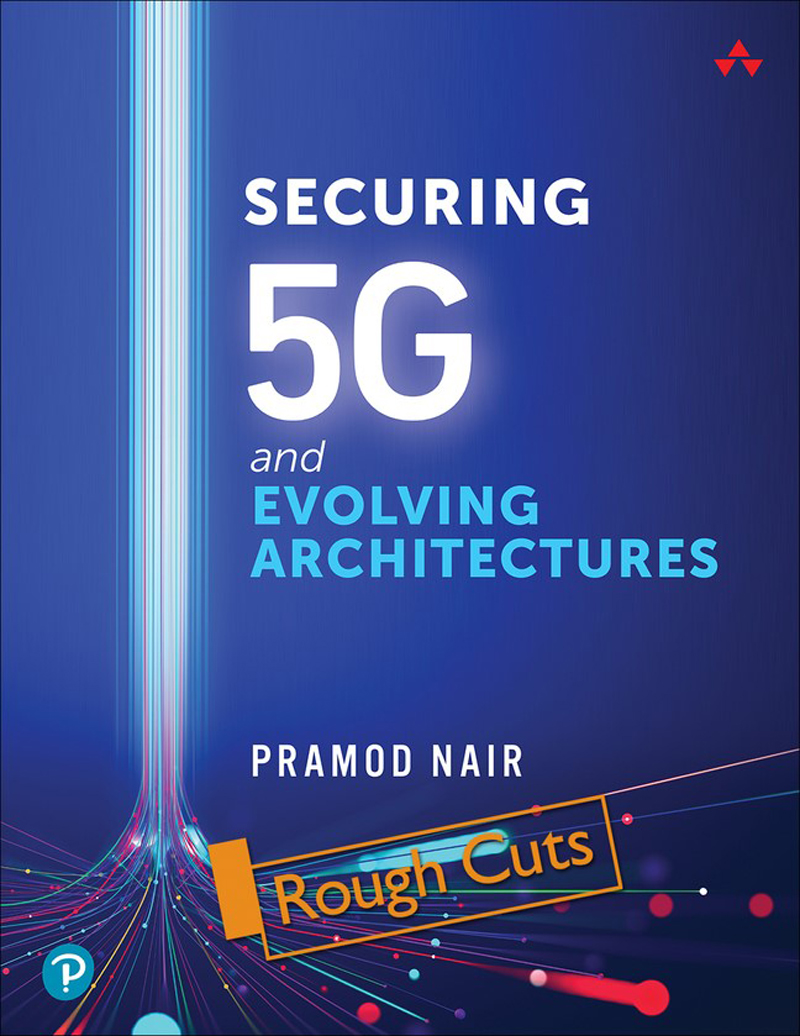Securing 5G and Evolving Architectures
Pramod Nair

Many of the designations used by manufacturers and sellers to distinguish their products are claimed as trademarks. Where those designations appear in this book, and the publisher was aware of a trademark claim, the designations have been printed with initial capital letters or in all capitals.
The author and publisher have taken care in the preparation of this book, but make no expressed or implied warranty of any kind and assume no responsibility for errors or omissions. No liability is assumed for incidental or consequential damages in connection with or arising out of the use of the information or programs contained herein.
For information about buying this title in bulk quantities, or for special sales opportunities (which may include electronic versions; custom cover designs; and content particular to your business, training goals, marketing focus, or branding interests), please contact our corporate sales department at corpsales@pearsoned.com or (800) 382-3419.
For government sales inquiries, please contact .
For questions about sales outside the U.S., please contact .
Visit us on the Web: informit.com/aw
[PE: Copy the LOC Control Number line from the email.]
Library of Congress Control Number: 2021917555
Copyright 2022 Pearson Education, Inc.
All rights reserved. This publication is protected by copyright, and permission must be obtained from the publisher prior to any prohibited reproduction, storage in a retrieval system, or transmission in any form or by any means, electronic, mechanical, photocopying, recording, or likewise. For information regarding permissions, request forms, and the appropriate contacts within the Pearson Education Global Rights & Permissions Department, please visit www.pearson.com/permissions.
No patent liability is assumed with respect to the use of the information contained herein. Although every precaution has been taken in the preparation of this book, the publisher and author assume no responsibility for errors or omissions. Nor is any liability assumed for damages resulting from the use of the information contained herein.
ISBN-13: 978-0-13-745793-9
ISBN-10: 0-13-745793-6
ScoutAutomatedPrintCode
Editor-in-Chief
Mark Taub
Product Line Manager
Brett Bartow
Executive Editor
Nancy Davis
Development Editor
Christopher A. Cleveland
Managing Editor
Sandra Schroeder
Project Editor
Mandie Frank
Copy Editor
Bart Reed
Indexer
Proofreader
Technical Reviewers
Dave Hucaby
Keith OBrien
Editorial Assistant
Cindy Teeters
Designer
Chuti Prasertsith
Compositor
codeMantra
Graphics
codeMantra
I would like to dedicate this book to my family. Thank you for the unwavering support, motivation and patience throughout the development of this book.
Table of Contents
Foreword
Society is about to embark on a digital upgradethe next generation of the worlds mobile communication infrastructure5G. Along with new and innovative capabilities, 5G also introduces new security features, vulnerabilities, and risks. 5G does not just represent significantly increased bandwidth and lower latency, but it is expected to fundamentally change the mobile ecosystem with new partnership models, network slicing, massive deployment of Internet of Things (IoT) devices, and ultimately, an increasingly critical dependency on the technology for society to function. Due to this, our ability to secure 5G will directly affect the resilience of critical infrastructure and national security.
Some of the security key risks affecting 5G confidentiality, integrity, and availability are supply chain risks, increasing complexity leading to new vulnerabilities, and inherent weaknesses in the standards. The supply chain risks have reached the geopolitical center stage due to the high societal impact of 5G, and this has led to national and EU-level regulations, risks assessments, and GSMAs accreditation scheme Network Equipment Security Assurance Scheme (NESAS). The inherent increased complexity of 5G leads to a wide range of new potential vulnerabilities that will require increased vigilance from product vendors, service providers, and users alike.
In order to manage these risks, 5G is equipped with a broad range of security features and capabilities, and GSMA has outlined a list of critically sensitive functionsvirtualization infrastructure, controller, orchestrators, Internet gateways, network slicing, mobile edge computing, routing and switching of IP traffic at the core, database functions, authentication, and access control. As always, a security by design approach following a zero-trust approach, with secure deployments and good operational hygiene, is key to securing the worlds 5G deployments.
In this book, Pramod Nair guides us through the evolution of cellular technologies from a security perspective, the security architecture, deployment modes and use cases of 5G, as well as discusses end-to-end security architecture and prioritizing security investments. His unique outlook as the Lead Security Architect, head of 5G security architecture in Cisco Systems, and from more than 20 years in security allow him to combine a theoretical and applied perspective for the benefit of both business and technical readers.
Andr rnes, PhD
Senior Vice President and Chief Security Officer at Telenor Group
Professor II at the Norwegian University of Science and Technology
Preface
5G technology will redefine the way we perceive cellular networks and will touch almost every aspect of our lives. 5G is not about just being faster, bigger, or better; its about enabling multiple services that we'll all consume on an everyday basis. It will give rise to a new ecosystem of developers building applications that exploit the openness of 5G to help you develop new use cases for consumption by enterprises and subscribers alike. New features in 3GPP Releases 16 and 17 help further enable new use cases for non-public deployment of 5G by industry verticals and tighter convergence of 3GPP and non-3GPP technologies, bringing in multiple deployment methodsincluding on-premises, hybrid, and fully public cloud-based deployments. The 5G ecosystem will see a breakout from 3GPP-only based architecture to an open, multi-technology, multi-standard, polyglot ecosystem.
This evolution of the technology landscape also requires an evolution of the security mindset. We should start thinking of security as a foundational layer. It should be one of the primary foundations for any planned 5G use case implementation. This requires embracing multilayered security beyond the requirements in 3GPP specifications.
The business operational risk, legal risk, and reputational risk exist not only for the companies providing 5G software and hardware infrastructure, but for all companies, nation-states, and individuals who provide and consume 5G technology.
The time is now to evaluate the cyber risk posture and apply innovative thoughts to how we can approach these challenges today and build for whats to come tomorrow.
Motivation for Writing This Book
Security in evolving cellular technologies is not an easy concept to grasp, as the technologies have evolved rapidly and are becoming increasingly complex and nuanced as they become more open, especially when you add 5G to the mix.


